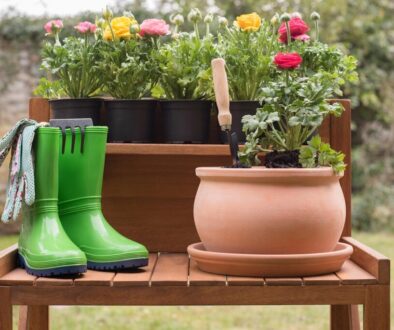How to Start a Rose Garden for Beginners: Your Step-by-Step Guide
Starting a rose garden might sound intimidating, but trust me, it’s easier than you think. With a little planning and patience, you’ll soon have a blooming paradise. Roses are timeless, elegant, and surprisingly adaptable. Whether you’re dreaming of a cottage-style garden or a few pots on your balcony, this guide will walk you through every step. Let’s dig in and turn your rose-growing dreams into reality!
1. Choose the Right Roses for Your Space
Before you start planting, it’s important to pick the right roses for your garden. Not all roses are created equal, and some are easier to grow than others. If you’re a beginner, choose hardy varieties like shrub roses or floribundas. These are low-maintenance and more forgiving if you make a mistake. Climbing roses are perfect for trellises, while miniature roses thrive in containers. Consider your climate, too—some roses love the heat, while others prefer cooler temperatures. Don’t forget to check the mature size of the plant. You don’t want a rose bush outgrowing its space and crowding your garden. Start small, and as you gain confidence, you can experiment with more exotic varieties.
2. Find the Perfect Spot for Your Roses
Roses are sun worshippers, so choose a spot that gets at least six hours of sunlight daily. Morning sun is especially helpful because it dries dew quickly, reducing the risk of diseases. Make sure the area has good air circulation to keep your plants healthy. Avoid planting roses near large trees or shrubs that might steal their nutrients or shade them. If you’re growing roses in pots, pick a sunny balcony or patio. Drainage is key—roses hate soggy roots, so ensure the soil is well-draining. If your garden has heavy clay soil, consider raising the beds or adding organic matter to improve drainage. A little prep work now will save you headaches later.
3. Prepare the Soil Like a Pro
Healthy soil is the secret to thriving roses. Start by testing your soil’s pH—roses prefer slightly acidic soil, with a pH between 6.0 and 6.5. You can easily find a soil test kit at your local garden center. If your soil is too alkaline, add sulfur or peat moss to lower the pH. If it’s too acidic, a bit of lime will do the trick. Next, enrich the soil with organic matter like compost or well-rotted manure. This boosts fertility and improves texture. Dig a hole twice as wide and deep as the rose’s root ball, and mix some compost into the soil you removed. This gives your roses a nutrient-rich environment to grow strong roots. Remember, happy roots mean happy roses!
4. Planting Your Roses the Right Way
Now comes the fun part—planting your roses! If you’re using bare-root roses, soak them in water for a few hours before planting. For potted roses, gently loosen the roots to encourage growth. Place the rose in the hole, making sure the graft union (the knobby part where the rose is joined to the rootstock) is just below the soil level. This protects it from harsh weather and promotes healthy growth. Fill the hole with soil, pressing gently to remove air pockets. Water thoroughly to help the soil settle. Add a layer of mulch around the base to retain moisture and keep weeds at bay. Don’t forget to label your roses—it’s easy to forget which variety is which!
5. Watering and Feeding Your Roses
Roses need consistent watering, especially during their first year. Aim to water deeply once or twice a week rather than a little every day. This encourages deep root growth, making your plants more drought-resistant. Always water at the base to avoid wetting the leaves, which can lead to fungal diseases. Feeding your roses is just as important. Use a balanced fertilizer or one specifically designed for roses. Start feeding in early spring when new growth appears, and continue every 4-6 weeks until late summer. Stop fertilizing in the fall to let your roses prepare for winter. A well-fed rose is a happy rose, and you’ll be rewarded with abundant blooms.
6. Pruning for Health and Beauty
Pruning might seem scary, but it’s essential for healthy, blooming roses. The best time to prune is in early spring when new growth starts. Remove dead, damaged, or diseased wood first. Then, cut back any crossing branches to improve air circulation. Aim to create an open center, which allows sunlight to reach all parts of the plant. For most roses, cut back about one-third of the plant’s height. Always use sharp, clean tools to make clean cuts at a 45-degree angle. Don’t worry if you make a mistake—roses are resilient and will bounce back. Regular pruning keeps your roses looking tidy and encourages more flowers.
 7. Dealing with Pests and Diseases
7. Dealing with Pests and Diseases
Even the best-kept rose gardens can face pests and diseases. The key is to catch problems early. Keep an eye out for common issues like aphids, black spots, and powdery mildew. If you spot pests, a strong spray of water or insecticidal soap usually does the trick. For fungal diseases, remove affected leaves and avoid overhead watering. Neem oil is a great organic solution for both pests and diseases. Prevention is always better than cure, so keep your garden clean and your roses healthy. A little vigilance goes a long way in keeping your roses pest-free.
8. Enjoying Your Rose Garden
Once your roses start blooming, it’s time to sit back and enjoy the fruits of your labor. Cut a few stems to bring indoors and brighten up your home. Share your blooms with friends and family—they make wonderful gifts. Take photos of your garden to track its progress and inspire future projects. Remember, gardening is a journey, not a destination. Don’t stress over perfection; even experienced gardeners face challenges. Celebrate every bloom, learn from every setback, and most importantly, have fun. Your rose garden is a reflection of your love and care, and it will only get better with time.
9. Seasonal Care for Your Rose Garden
Roses need different care as the seasons change. In spring, focus on pruning, feeding, and mulching to kickstart growth. Summer is all about watering, deadheading spent blooms, and keeping an eye out for pests. Fall is the time to prepare your roses for winter—stop fertilizing, reduce watering, and add a thick layer of mulch to protect the roots. In winter, your roses will go dormant, but you can still plan for the next season. Take notes on what worked and what didn’t, and start dreaming about new varieties to try. Seasonal care ensures your roses stay healthy and vibrant year after year.
10. Companion Planting for Healthier Roses
Did you know that certain plants can help your roses thrive? Companion planting is a natural way to boost your garden’s health. Lavender, marigolds, and garlic repel pests, while herbs like thyme and oregano improve soil quality. Planting low-growing flowers like alyssum or catmint around your roses adds beauty and attracts beneficial insects. Avoid planting roses near vegetables or other heavy feeders, as they might compete for nutrients. A well-planned companion garden not only enhances your roses but also creates a balanced ecosystem.
11. Troubleshooting Common Rose Problems
Even with the best care, you might run into a few challenges. Yellow leaves? It could be overwatering or a nutrient deficiency. Few blooms? Maybe your roses need more sun or fertilizer. Leggy growth? Time to prune. Don’t panic—most issues have simple solutions. Keep a gardening journal to track what’s happening in your garden. This helps you identify patterns and make adjustments. Remember, every problem is a learning opportunity. With a little patience, you’ll soon be a rose-growing pro.
12. Expanding Your Rose Garden
Once you’ve mastered the basics, why not expand your rose garden? Try growing different varieties like hybrid teas, grandifloras, or old garden roses. Experiment with colors, fragrances, and bloom shapes. You can even create themed gardens, like a romantic white rose garden or a vibrant rainbow bed. If space is limited, consider vertical gardening with climbing roses or growing more roses in containers. The possibilities are endless, and each new addition brings fresh joy and excitement.
13. Sharing Your Love for Roses
Gardening is more fun when you share it with others. Join a local gardening club or online community to exchange tips and experiences. Attend rose shows or workshops to learn from experts. Share cuttings or seeds with friends and inspire them to start their own rose gardens. You can also document your journey on social media or a blog. Not only will you connect with fellow enthusiasts, but you’ll also create a lasting record of your garden’s growth.
14. Sustainable Rose Gardening Practices
As you nurture your roses, consider adopting eco-friendly practices. Use organic fertilizers and pest control methods to protect the environment. Collect rainwater for irrigation to conserve water. Recycle garden waste into compost to enrich your soil. Choose native or drought-tolerant rose varieties to reduce maintenance. Sustainable gardening not only benefits your roses but also supports the planet. It’s a win-win for you and Mother Nature.
15. The Joy of Growing Roses
At the end of the day, growing roses is about more than just beautiful flowers. It’s about the joy of watching something grow, the satisfaction of overcoming challenges, and the peace of spending time in nature. It’s about creating a space that reflects your personality and brings happiness to your life. Whether you have a single rose bush or a sprawling garden, every bloom is a testament to your care and dedication. So take a moment to smell the roses—literally and figuratively. You’ve earned it.
Final Tips for Beginner Rose Gardeners
- Start small and grow at your own pace.
- Don’t be afraid to ask for help or seek advice.
- Celebrate every success, no matter how small.
- Remember, gardening is a journey, not a race.
With these tips and a little patience, you’ll soon have a rose garden that’s the envy of the neighborhood. So roll up your sleeves, get your hands dirty, and let the magic of roses transform your outdoor space.
Happy Gardening!










